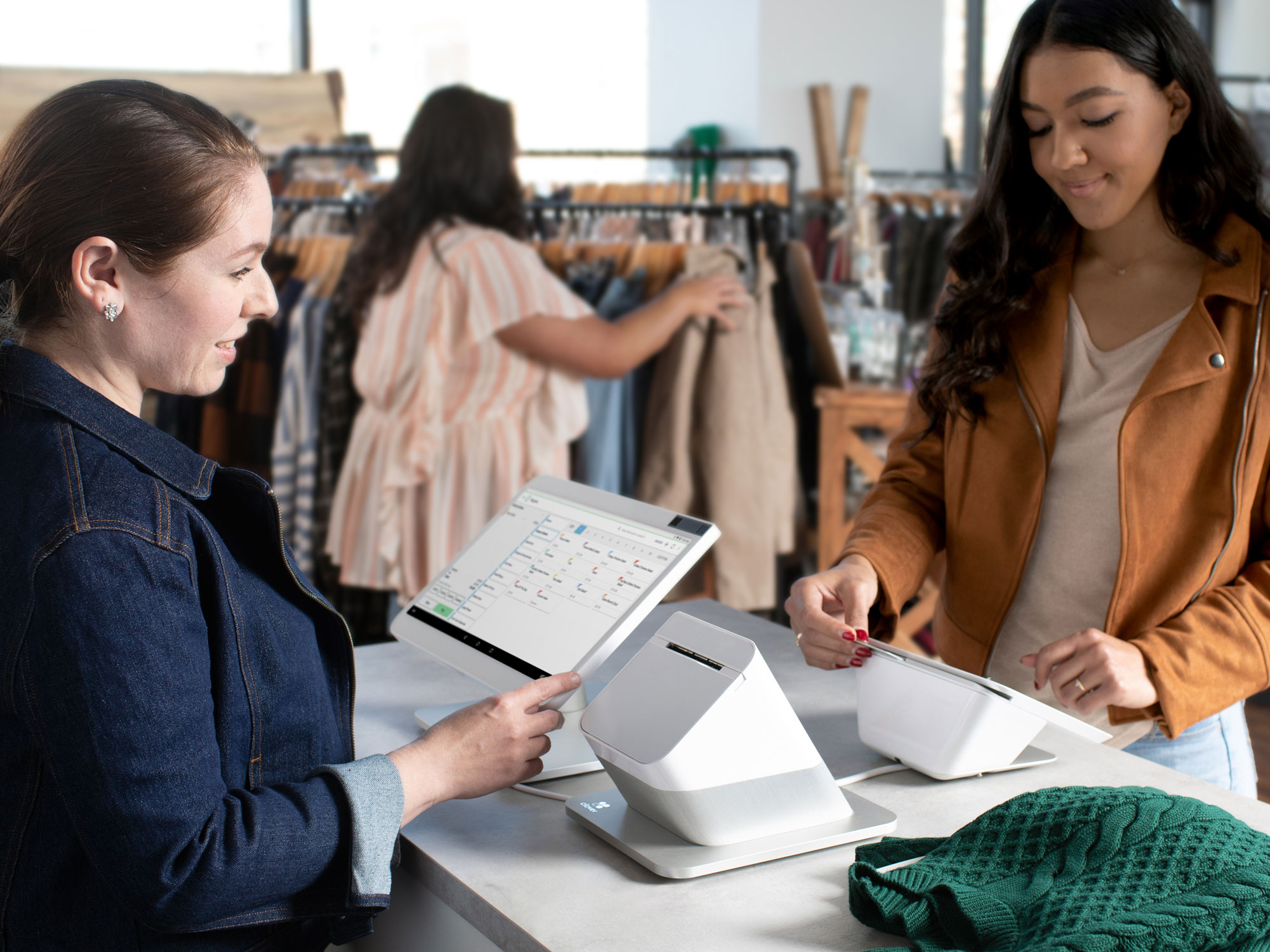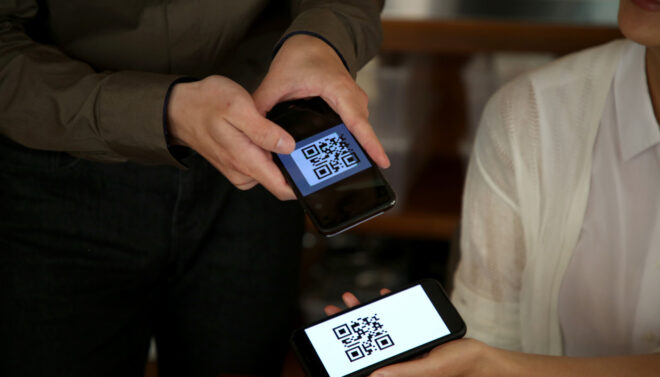What is a POS system, how does it work, and how do I choose one?
Editorial Team
14 min read
Point-of-sale (POS) systems help businesses accept and process payments as well as manage most aspects of operations, such as orders, inventory, employees, customer engagement, scheduling, and reporting. This guide will walk you through what you need to know about POS systems and how to choose the right one for your business.
In this guide:
- What is a point-of-sale system?
- How does a POS system work?
- How to choose a POS system
- What to consider when choosing a POS system
- What is a POS system supposed to cost?
- Need more help choosing a POS system?
What is a point-of-sale system?
While the earliest cash registers trace back to shortly after the Civil War, the last few decades have seen a rapid evolution in financial services and business management technologies. POS systems can do more today than could have been imagined just 20 years ago.
What does a POS system do? The primary function of a POS system is to process credit and debit card payments, as well as record cash and check payments. These systems also track sales and can generate reports to help you better understand trends and peak sales periods. In addition, nearly every POS uses your transaction data to help manage your inventory, letting you know when you’re running low.
Depending on which system you select, you may have access to a number of additional tools. For example, your POS system can help you with staff scheduling, online order management, customer engagement including loyalty programs and targeted promotions, and even games. While your POS might not be able to control room temperature or play your favorite music (at least, not yet), it can help you be more efficient in nearly every aspect of managing your business.
How does a POS system work?
Although POS systems come in many shapes and sizes, one of their primary functions is the ability to complete sales transactions and accept payments.
The process typically looks like this:
1. Checking out: The shopper brings the items to the designated checkout counter or area within the store. The cashier can either look up the item in the POS system by category, item name, or SKU number and enter the applicable quantities, or scan the goods using a compatible barcode scanner.
2. Collecting payment: The POS system calculates the total cost of items sold, including sales tax, and the customer presents payment which can include:
- Swiping, dipping, or tapping a credit or debit card
- Waving a contactless mobile wallet or wearable device
- Using a gift card
- Writing a check
- Handing over cash
If a credit, debit, or check is used, the POS device captures a customer’s payment details and sends this information electronically to the merchant’s payment processor to route through the appropriate networks for authorization. Thereafter, confirmation of the transaction is sent back to the POS device.
The authorization process takes just mere seconds, with multiple layers of security built in at various stages to help prevent sensitive payment data from falling into the wrong hands.
3. Completing the sale: Once electronic payment has been authorized or change has been given to the customer, the sale becomes complete, and a receipt is either printed, emailed, or both. The items are deducted from the inventory, and points or rewards are added to a customer’s profile if a loyalty program exists.
How to choose a POS system for your business
Choosing the right POS system can have a substantial positive impact on your business. This is why it’s critical to take the time to do your research and determine the factors important to your business. Making the right decision when choosing a POS system can positively affect your business in three basic ways:
Business operations
Once your POS system is up and running, the management of your business should take less time and be more efficient. Saving time on paperwork, accounting, inventory management, and staff scheduling frees you up to focus on growth, strategy, and innovation. A powerful POS interface like the Clover Dashboard gives you insights to your business at your fingertips, wherever you are. Most modern POS systems are designed to integrate with common applications like payroll. And to meet your specific needs (or indulge your whims), some POS providers even have their own app markets. Clover, for example, has the Clover App Market with hundreds of apps you can add to help you run all aspects of your business.
Financial health
With a good POS system, you not only streamline your business practice, you help your bottom line. Top-notch security and PCI compliance are built right into your devices to help protect your customers’ data and business from chargebacks or fraud. More advanced POS systems like Clover can also provide financial services, such as faster settlement (for example, Clover’s Rapid Deposit) or advances against your own sales (Clover Capital).
Customer engagement
Choosing a POS system with built-in customer engagement features allows you to better understand your customers, connect with them, expand your clientele, and deepen loyalty. Clover’s Customer Engagement Suite, for example, includes Rewards, a customizable rewards program to recognize your most loyal customers; Promos, which helps you send targeted and limited promotions; and Feedback, which lets your customers share kudos or concerns with you without posting publicly. Look for systems like Clover that let you customize the way you organize your customer data. To generate more business and sales, you can provide and manage custom digital or physical gift cards so that your customers can introduce their friends to your products and services.
What to consider when choosing a POS system
The world of POS systems has gotten a lot more crowded in recent years, so your choices are now much more plentiful. To determine which POS is right for you, we recommend starting with your business type and structure, goals and expectations, and budget considerations.
Your business
The first and most immediate question to ask when choosing a POS system has to do with the nature, size, and structure of your business. Namely:
- Are you in the food, retail, or service sectors?
- Do you sell products, services, or a mix of both?
- How do you want to accept payments?
- What are the challenges in running your business?
- What is the size of your business?
- Do you operate strictly online, have a brick & mortar, pop-up, or mobile store?
- What is your staffing setup? E.g., are you employee-owned, fully staffed, or work primarily with contractors?
Your goals and expectations
What is a POS system supposed to do for your business? In its most basic function, it will provide payment processing. Depending on your needs, you may also want to use POS technology for the following:
- Order management
- Inventory management
- Cost tracking and management
- Payroll & other staffing needs
- Reporting
- Making payments to vendors and other suppliers
- Customer management
- Customer engagement
Those last two points merit special consideration, as POS systems can collect, store, and sort valuable information about your customers so you know who is the most loyal to your business, what do they like to buy, who are the ones most likely to respond to a discount or coupon offer, and so on.
Let’s also think down the road a bit. Do you have a strategic plan mapping out your next 1, 5, 10 years? Are you interested in growing the business or opening new locations? Or do you plan to keep steady with your initial launch?
Your finances: present and future
Having a good grasp on your budget is important when choosing a POS system for your business. In your income and expense projections, account for credit and debit card processing fees. Think about your item costs, and estimate your average sale. That data will be useful since credit card fees often include percentage of the sale as well as a flat transaction fee. Your plans for growth over time, if any, will also have an impact here.
Do you use an independent accountant, have a bookkeeper on staff, and/or do you rely on software like QuickBooks? Some POS systems will work and share data with your accounting software. For example, Clover works great with QuickBooks, automatically updating sales transactions in the software. Generating reports is a built-in feature of many POS systems, including Clover, so you can access your numbers with the touch of a button.
On-premises vs cloud POS systems
If you’ve read our Should I upgrade my cash register to a POS system? guide, you know all about on-premises and cloud-based POS systems. But to recap, on-premises POS systems might be able to save you money since you won’t need to pay ongoing software or data storage fees. However, there may be higher costs associated with purchasing the system, having it customized to your needs, keeping it up to date, and hiring consultants to make sure your business practice is in alignment with the Payment Card Industry Data Security Standards (you can read all about that here).
A cloud-based POS system might be a smarter choice in the long term. Cloud-based POS systems typically have a lower upfront cost, which is great for a business just starting out. Once your system is in place, many of your managerial tasks (such as inventory, payroll, and reporting) can be automated or streamlined so you have more time to focus on strategy and planning. With a cloud-based system, you also have an element of future-proofing. As new software and security protocols become available, you can update your system with ease or even automatically. And if you want to keep an eye on your business while you’re off-site, you may be able to access your data on a web or mobile platform. Clover does this through the Clover Dashboard, which is available through a Clover POS device, a web browser, or your mobile device so you can access reports and manage your business from anywhere.
Other things to consider when choosing a POS system
There are a few more things to keep in mind when choosing the right POS. Certain POS systems will have industry- or vertical-specific software that may be valuable to you. For example, if you run a restaurant, check out the power and ease of Clover Dining. If you know that you want to connect better with your customers, check out Clover’s Customer Engagement Suite to cover your needs for CRM, loyalty programs, and promotional communications. If you spend a lot of time on payroll, you could try ADP, the industry leader in payroll, that works with the Clover POS system. All these popular apps are part of the Clover App Market and work with the Clover POS system. If you’re an appointment-based business, look into tools to help your customers book, confirm, or reschedule with ease. And don’t forget about financial services, like cash advances and quick deposit.
Most POS systems will give you multiple options in terms of devices to maximize power, mobility, and efficiency. For example, if you have a full-service restaurant, it might be worth it to have a handful of Clover Flex devices available so your servers can take orders and payments tableside or curbside. Clover Flex is a portable system that can work on its own or with countertop POS devices like Clover Mini or Clover Station.
Lastly, do careful research about what kind of tech support is available and/or included in your plan. A good POS provider should enable you to focus on making your business succeed, and that includes providing 24×7 support, whether live or via chat.
What is a POS system supposed to cost?
Pricing structures for POS systems vary across a number of categories. It can seem a bit overwhelming when you start comparing pricing across POS providers, so it’s helpful to break it down to the various components. These are the types of costs you can expect:
Equipment costs
Some POS systems require you to purchase the equipment while others provide options for leasing. If yours is a new business, it may be best to lease a system for maximum adaptability when you’re starting out. If you’ve been around for a while, do the math and see if buying might be a better investment. Keep in mind that if you lease, you can upgrade as new equipment becomes available, which may be an important consideration.
There are many different options for hardware, depending on the type and size of your business. If you want a simple credit card reader that just connects to your phone or mobile device (like a Clover Go), you can expect to spend between $50 and $70 to get started. If you want a small, portable handheld device that’s great for servers to take orders and payments at the table or curbside (ours is Clover Flex), prices range from $300-$500. Small countertop devices (like Clover Mini) can cost anywhere from $299 to $800, but some may require you to purchase a tablet to make the system work. If you want a high-performance, full-service system (Clover Station Solo or Station Duo for example), you can expect to pay between $800 and $1,400 for your equipment.
Processing charges
In addition to basic banking fees, you’ll need to pay for credit and debit card processing. These fees might be a flat rate or a percentage of the sale processed, but usually it’s a combination of the two. As an example, you can expect to pay about $0.10 per credit card transaction, plus between 2% and 3% of the sales transaction. If you are processing a credit card payment without the card present (in industry parlance it’s called “card not present”), the percentage jumps to around 3.5% to cover the added risk. Estimate how many transactions you intend to process and how much in net sales you expect to make, to calculate your approximate total monthly fees. It’s important to note that whom you bank with can also affect these costs. Ask your bank as well as your merchant processing provider for their fee information, and don’t be afraid to ask detailed questions. Some merchant services will assess an additional fee if you don’t meet a monthly minimum in your charges. You can read more about that here.
Essential software costs
Some POS systems may charge you a fee for software. You won’t be able to use the system without it, so you should consider this part of the base fees involved with using a modern POS. Usually this software cost varies based on the type of device you are using, but it generally ranges from about $15 to $70 each month as a flat fee.
Additional software costs
Are you interested in extra software offered through your POS System? If you choose Clover, you’ll have hundreds of apps at your fingertips in the Clover App Market. Many of them are free, but some have costs. One-time purchases can range from $0.99 up to $30. Other apps have monthly costs or per-use fees. Think about which apps you intend to use and calculate how much it will cost to get the functionality you want in your POS. These apps are optional, of course, but if they are integral to your business practice, be sure to include them in your budget.
Need more help with how to choose a POS system?
Choosing a POS system is a big decision, and shouldn’t be rushed. After all, you and your staff will use the system each and every day you do business. Take your time doing your research, and know that the best way to start is by examining and articulating your needs and goals for the business. Check out our other guides: Credit Card Processing, Merchant Services, PCI Compliance, and Should I Upgrade My Cash Register to a POS System?
Related Posts
10 scholarships for young entrepreneurs and business owners
QR codes for restaurants: Helping your business adapt to the pandemic
Popular Topics
Stay in touch
Sign up and learn more about Clover.
Thank you for your subscription!
More posts about starting a small business
eBook





